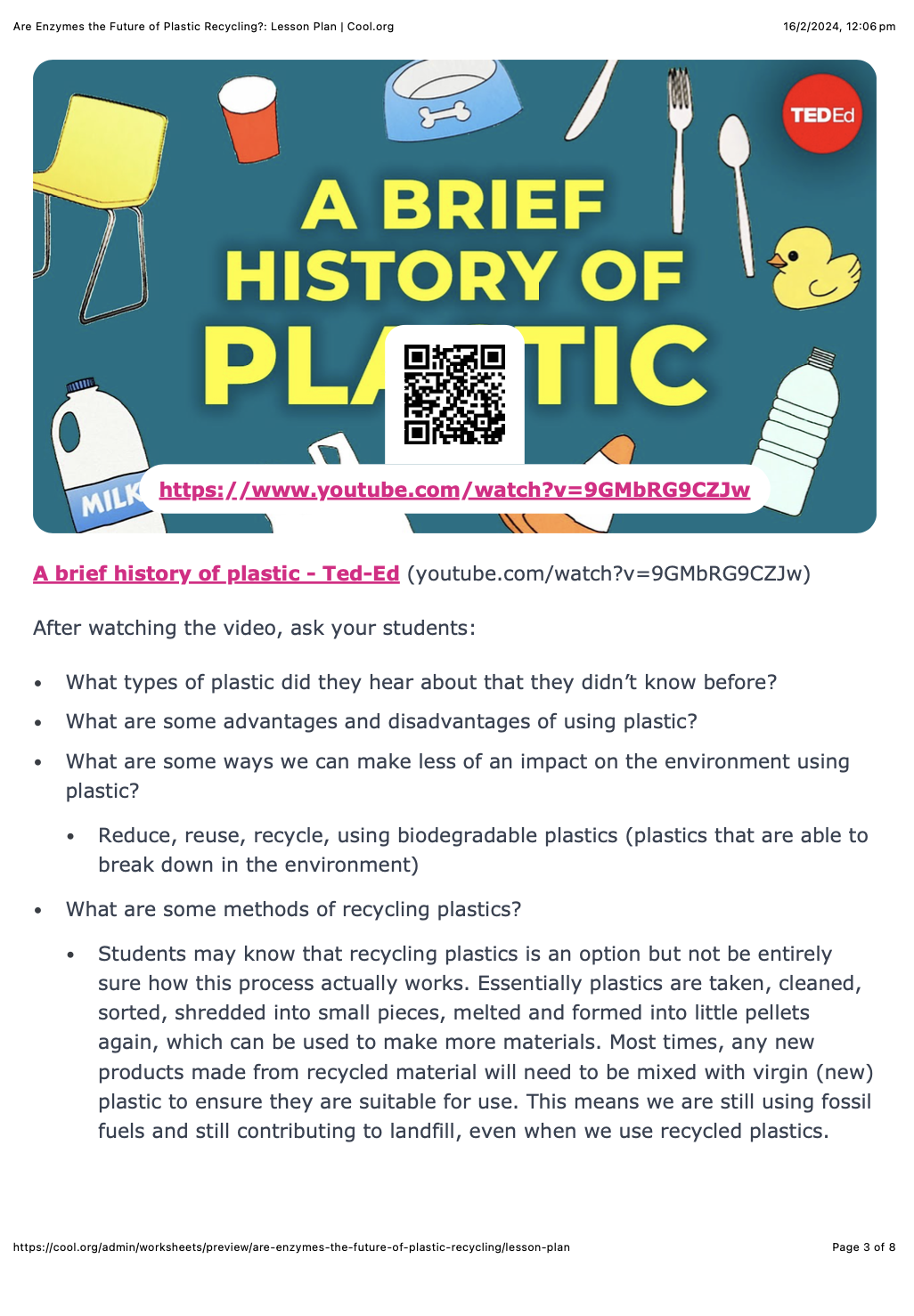Lesson summary
Students will explore the properties of plastic and its impact on the environment through its lifecycle, uncovering enzymes and how they can be used to recycle plastics in a sustainable way.
Learning intentions:
Students will...
- explore the properties of plastic and its impact on the environment as well as investigate enzymes and discover how they can be used to break down plastics sustainably in the recycling process
Success criteria:
Students can...
- recall how plastic is made and summarise its impacts on the environment throughout its lifecycle
- describe what an enzyme does and how these compounds can be used to break plastic down sustainably
- evaluate the environmental impact of different plastic recycling methods
Lesson guides and printables
Curriculum links
Select your curriculum from the options below.
Lesson details
Skills
This lesson is designed to build students’ competencies in the following skills:
- creative thinking
- critical thinking
- collaboration
- curiosity
- problem-solving
Curriculum Mapping
Australian Curriculum (v9.0) content description: Year 4 Chemical Sciences
- examine the properties of natural and made materials, including fibres, metals, glass and plastics and consider how these properties influence their use. AC9S4U04
Relevant parts of Year 4 achievement standards: Students can relate the uses of materials to their properties
NSW Syllabus outcomes: ST2-7MW-T
General capabilities: Critical and Creative Thinking
Cross-curriculum priority: Sustainability
UN Sustainable Development Goals
UN SDG 12: Ensure sustainable consumption and production patterns
- Target 12.5: By 2030, substantially reduce waste generation through prevention, reduction, recycling and reuse.
Resources Required
- Device capable of displaying audio-visual material
- Dry plain biscuits like Saladas or water crackers
- Examples of plastic items for students to observe (Images in lesson if items not available)
- Student devices for group research
- Optional - Lego
- Optional - materials for pineapple enzyme experiment
Additional Info
These lessons were created in partnership with Planet Ark and Sam for Change.
SAM FOR CHANGE was created to build a greater knowledge of plastic management and the possibilities for sustainability within the Australian community. The aim is to combine Samsara Eco’s infinite recycling solution and the SAM FOR CHANGE community in order to combat greenwashing and establish their infinite recycling solution as the expected norm.
Planet Ark’s work with Samsara Eco and SAM FOR CHANGE aims to facilitate the education of younger generations about the current plastic recycling system and to develop an understanding of enzymes, such as those utilised by Samsara Eco in their alternative plastic recycling technology.
Level of teacher scaffolding: Medium



Welcome back!
Don't have an account yet?
Log in with:
Create your free Cool.org account.
Many of our resources are free, with an option to upgrade to Cool+ for premium content.
Already have an account?
Sign up with:
By signing up you accept Cool.org's Terms and Conditions(Opens in new tab) and Privacy Policy(Opens in new tab).